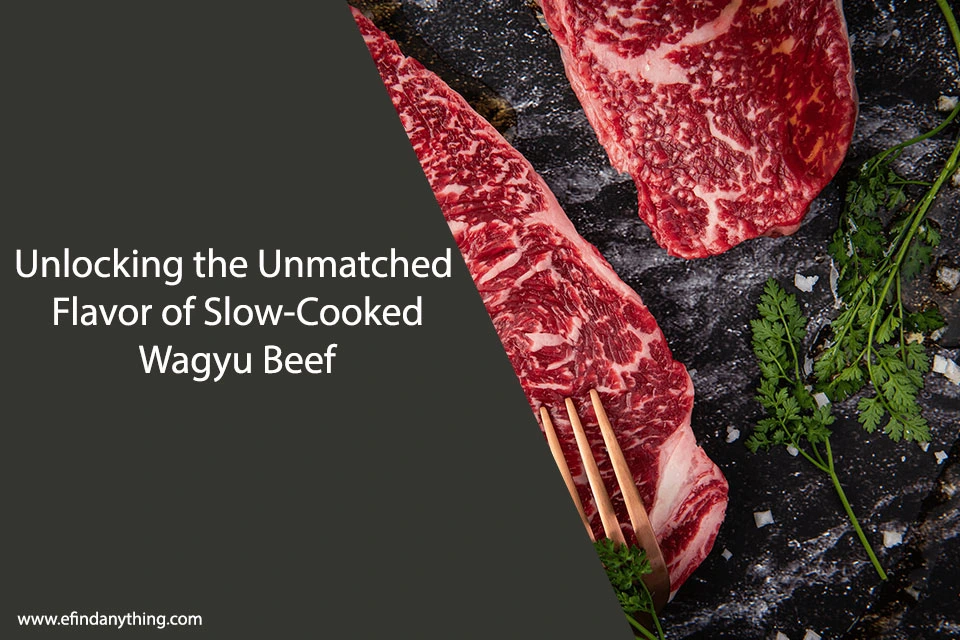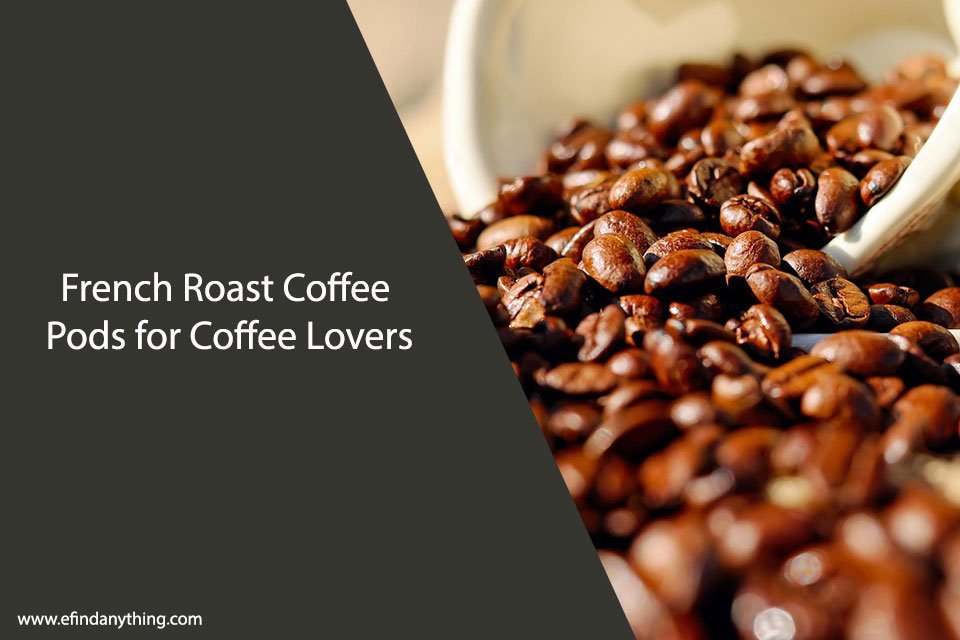If you’re a fan of Mediterranean cuisine, then you’re probably familiar with falafel. These crispy, savory, and satisfying balls are made from ground chickpeas, herbs, and spices, and are a staple in Middle Eastern street food. If you’ve ever wondered how to make falafel at home, we’ve got you covered. In this article, we’ll share our favorite falafel recipe that you can easily recreate in your own kitchen.
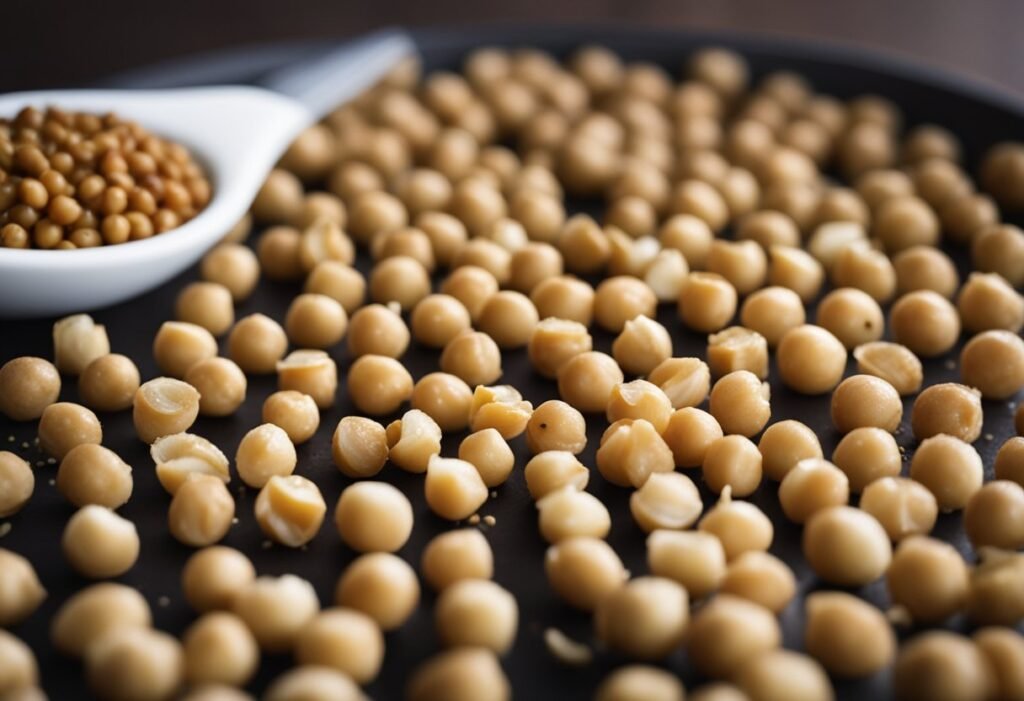
Making falafel from scratch may seem intimidating, but it’s actually quite simple. The key is to use high-quality ingredients and to follow a few basic steps. In our recipe, we’ll show you how to prepare the chickpeas, mix the ingredients, and shape the falafel balls. We’ll also share tips on how to achieve the perfect texture and flavor. Whether you’re a seasoned cook or a beginner, you’ll be able to make delicious falafel that rivals your favorite restaurant’s.
So, let’s get started on our falafel-making journey. With a little bit of patience and practice, you’ll be able to enjoy fresh, homemade falafel anytime you want. Let’s dive in!
Ingredients Needed

To make delicious falafel, we need a few key ingredients. These include chickpeas, herbs and spices, and additional ingredients to add flavor and texture. Let’s take a closer look at each of these components.
Chickpeas
Chickpeas are the main ingredient in falafel and are responsible for its unique texture and flavor. We will need one and a half cups of dried chickpeas, which should be soaked overnight in water. This will help to soften them and make them easier to blend.
Herbs and Spices
Herbs and spices are what give falafel its distinct taste. We will need a handful of fresh parsley and cilantro, as well as one small onion, four cloves of garlic, and one teaspoon of ground cumin. These ingredients will be blended together with the chickpeas to form the falafel mixture.
Additional Ingredients
To add extra flavor and texture to our falafel, we will need a few additional ingredients. These include one tablespoon of flour, one teaspoon of baking powder, and half a teaspoon of salt. We will also need vegetable oil for frying the falafel.
By using these ingredients, we can create a delicious and authentic falafel recipe that is sure to impress.
Equipment Required

To make falafel, we will need a few essential pieces of equipment.
Food Processor: A food processor is necessary to grind the chickpeas and other ingredients into a fine paste. A blender can also be used, but a food processor is the preferred choice.
Mixing Bowl: We will need a large mixing bowl to combine the ground chickpeas with the other ingredients.
Measuring Cups and Spoons: Accurate measurements are crucial when making falafel. We will need measuring cups and spoons to measure out the ingredients precisely.
Knife and Cutting Board: We will need a knife and cutting board to chop the herbs and onions finely.
Frying Pan: A frying pan is necessary to cook the falafel. A non-stick frying pan is the best option, as it requires less oil.
Thermometer: A thermometer is optional but recommended to ensure that the oil is at the correct temperature for frying.
Having these essential pieces of equipment will make the process of making falafel much more manageable. By having everything we need, we can focus on the recipe and make the best falafel possible.
Preparing the Chickpeas

To make delicious falafel, it’s important to start with properly prepared chickpeas. Here’s how we do it:
- Soak the chickpeas: We start by soaking dried chickpeas in plenty of water for at least 12 hours. This helps to soften them and make them easier to blend into a smooth mixture.
- Drain and rinse the chickpeas: After soaking, we drain the chickpeas and rinse them thoroughly with fresh water. This helps to remove any dirt or debris that may have accumulated during the soaking process.
- Dry the chickpeas: We then spread the chickpeas out on a clean kitchen towel and pat them dry. This helps to remove any excess moisture that could prevent the falafel from forming properly.
- Peel the chickpeas: To achieve an extra-smooth texture, we like to peel the chickpeas before blending them. This can be a bit time-consuming, but it’s worth it for the final result. Simply pinch each chickpea between your fingers to remove the thin outer skin.
- Blend the chickpeas: Finally, we blend the chickpeas in a food processor until they form a smooth, thick paste. Be sure not to over-blend, as this can make the mixture too thin and difficult to shape into balls.
By following these steps, you’ll be well on your way to making delicious, authentic falafel at home.
Making the Falafel Mixture
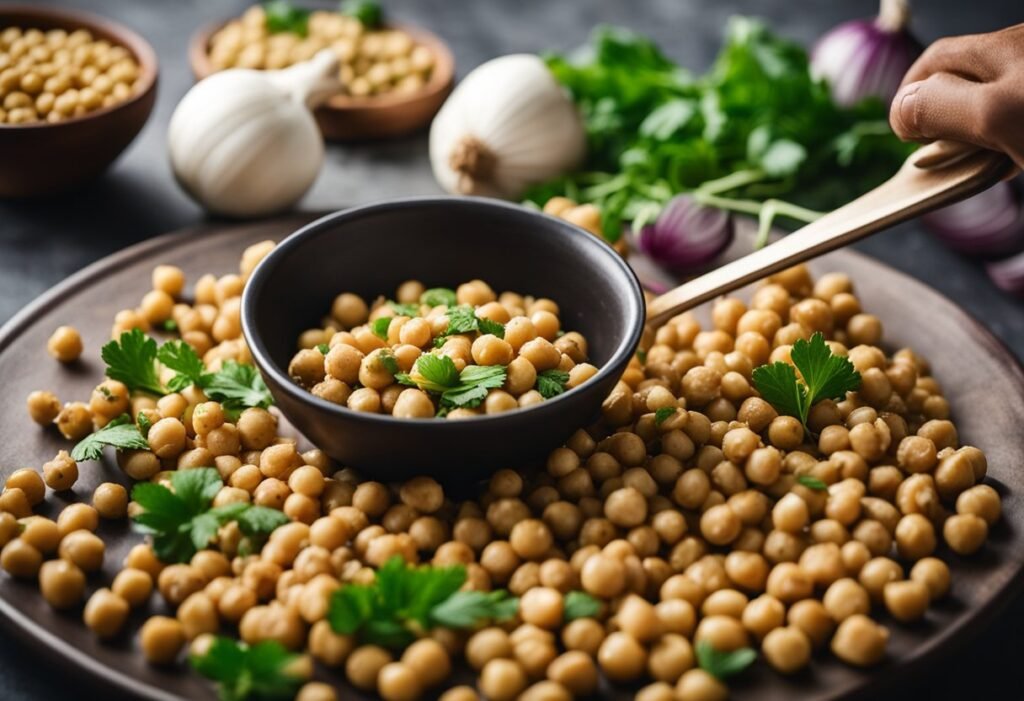
To make the perfect falafel, we need to start by making the falafel mixture. This is the most important step in the process, as it will determine the texture and flavor of the final product. In this section, we will discuss the two key steps in making the falafel mixture: blending the ingredients and seasoning the mixture.
Blending Ingredients
The first step in making the falafel mixture is to blend the ingredients. For this, we will need a food processor. Here are the ingredients we will need:
- 2 cups of dried chickpeas
- 1 small onion, chopped
- 4 cloves of garlic, chopped
- 1/2 cup of fresh parsley, chopped
- 1/2 cup of fresh cilantro, chopped
- 1 teaspoon of cumin
- 1 teaspoon of coriander
- 1 teaspoon of salt
- 1/2 teaspoon of black pepper
- 1/2 teaspoon of baking powder
To start, we will soak the chickpeas in cold water for at least 12 hours. After that, we will drain them and add them to the food processor along with the onion, garlic, parsley, cilantro, cumin, coriander, salt, black pepper, and baking powder. We will pulse the mixture until it is finely ground, but not pureed. It should be coarse, with some texture.
Seasoning the Mixture
Once we have blended the ingredients, the next step is to season the mixture. This is where we can add our own personal touch to the recipe. Here are some common seasonings that can be added to the falafel mixture:
- 1/2 teaspoon of paprika
- 1/2 teaspoon of turmeric
- 1/4 teaspoon of cayenne pepper
- 1/4 teaspoon of cinnamon
- 1/4 teaspoon of nutmeg
We can also adjust the salt and pepper to taste. Once we have added the seasonings, we will mix the mixture well with our hands, making sure that all the ingredients are evenly distributed.
In conclusion, making the falafel mixture is a crucial step in making delicious falafel. By blending the ingredients and seasoning the mixture, we can create a flavorful and textured mixture that will make the perfect falafel.
Shaping the Falafel
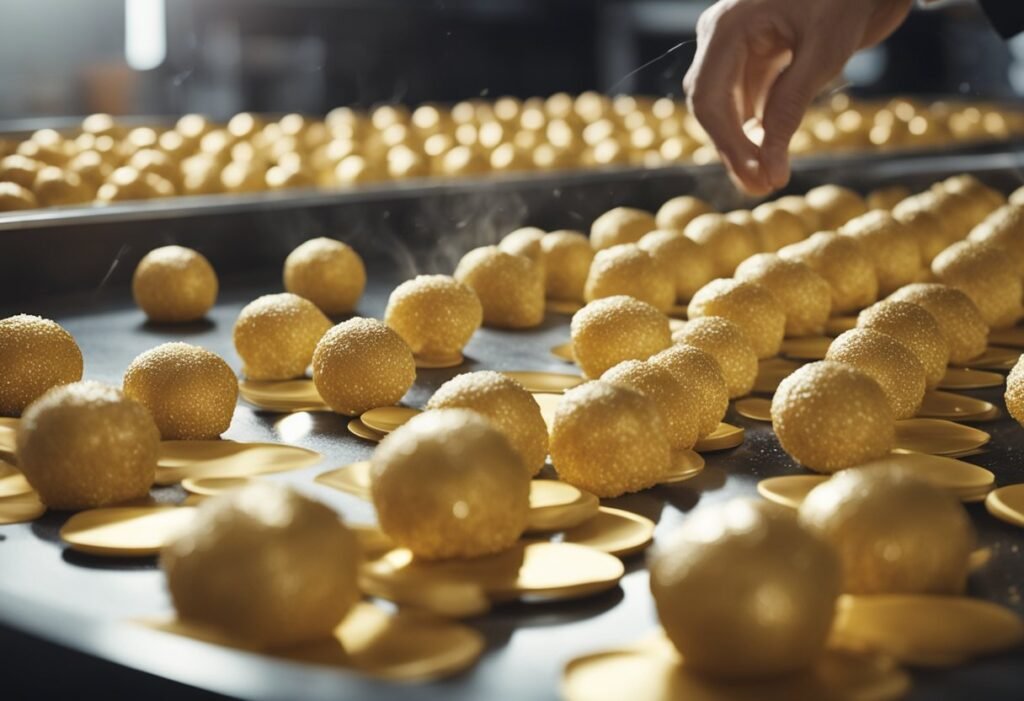
Now that we have our falafel mixture ready, it’s time to shape them into small balls or patties. Here are some tips to help you shape your falafel perfectly:
- Use a cookie scoop or spoon to portion the mixture evenly. This will help ensure that all your falafel pieces are the same size and will cook evenly.
- Wet your hands with water or oil before shaping the falafel. This will prevent the mixture from sticking to your hands and make it easier to shape.
- Roll the mixture into balls or flatten them into patties. The size and shape of the falafel is up to you, but keep in mind that smaller pieces will cook faster and larger pieces will take longer.
- Place the shaped falafel on a parchment-lined baking sheet. Make sure to leave some space between each piece so they don’t stick together.
- Chill the shaped falafel in the refrigerator for at least 30 minutes before frying or baking. This will help them hold their shape and prevent them from falling apart during cooking.
By following these simple tips, you can easily shape your falafel mixture into perfect little bites that are crispy on the outside and tender on the inside.
Cooking Methods
Frying the Falafel
When it comes to cooking falafel, frying is the most traditional and popular method. To fry falafel, heat oil in a deep pan or pot over medium-high heat until it reaches 375°F. Use a small cookie scoop or spoon to form the falafel mixture into small balls, and carefully drop them into the hot oil. Fry the falafel for about 3-4 minutes or until they turn golden brown. Use a slotted spoon or a spider strainer to remove the falafel from the oil and place them on a paper towel-lined plate to drain excess oil.
Frying falafel gives it a crispy exterior and a soft and fluffy interior. However, it can be a bit messy and requires more oil than other cooking methods.
Baking the Falafel
For a healthier and less messy option, you can bake the falafel in the oven. Preheat your oven to 375°F and line a baking sheet with parchment paper. Use the same method of forming the falafel mixture into small balls, and place them onto the baking sheet. Brush the falafel balls with a little bit of oil and bake them for 20-25 minutes, flipping them halfway through, until they are golden brown.
Baking the falafel results in a slightly drier texture than frying, but it is a healthier option and requires less oil. Plus, it is easier to make a large batch of falafel using this method.
Overall, both frying and baking are valid options for cooking falafel. Choose the method that suits your taste and dietary preferences.
Serving Suggestions
When it comes to serving falafel, there are a variety of options to choose from. Here are a few of our favorite serving suggestions:
Dips and Sauces
Falafel is often served with a variety of dips and sauces. Here are a few options to consider:
- Tahini Sauce: This classic sauce is made from tahini paste, lemon juice, garlic, and water. It has a tangy, nutty flavor that pairs well with the earthy taste of falafel.
- Yogurt Sauce: If you prefer a creamier dip, try making a yogurt sauce. Mix plain yogurt with lemon juice, garlic, and fresh herbs like parsley or dill. This sauce is cool and refreshing, and complements the spiciness of falafel nicely.
- Hot Sauce: If you like things spicy, consider serving your falafel with a hot sauce. You can make your own by blending together hot peppers, garlic, vinegar, and salt. Or, you can use a store-bought hot sauce like sriracha or harissa.
Accompaniments
In addition to dips and sauces, there are a variety of accompaniments that pair well with falafel. Here are a few options to consider:
- Pita Bread: Falafel is often served in a pita pocket, making it easy to eat on the go. Warm up your pita bread in the oven or on the stovetop before serving for an extra crispy texture.
- Salad: If you’re looking for a healthier option, consider serving your falafel with a side salad. A simple salad of chopped lettuce, tomatoes, and cucumbers with a lemon and olive oil dressing is a great option.
- Pickled Vegetables: Pickled vegetables like turnips, beets, and carrots are a common accompaniment to falafel in the Middle East. They add a tangy crunch to each bite.
No matter how you choose to serve your falafel, it’s sure to be a delicious and satisfying meal. Enjoy!
Storing and Reheating
Refrigeration
If you have leftover falafel, it’s best to store them in an airtight container in the refrigerator. Falafel can last up to 3-4 days in the fridge. To keep them fresh, make sure to store them in a container with a tight-fitting lid to prevent air from getting in.
Freezing
Falafel can also be frozen for later use. Simply place the falafel in a freezer-safe container or bag and store them in the freezer. Falafel can last up to 3 months in the freezer.
Reheating Instructions
To reheat falafel, preheat your oven to 350°F (175°C). Place the falafel on a baking sheet and bake for 10-12 minutes, or until heated through. You can also reheat falafel in the microwave. Place the falafel on a microwave-safe dish and heat for 30 seconds to 1 minute, or until heated through.
When reheating falafel, be sure not to overheat them as this can cause them to become dry and lose their texture. Reheating falafel in the oven or toaster oven is the best way to maintain their crispy exterior.
In conclusion, storing and reheating falafel is easy and convenient. By following these simple steps, you can enjoy your leftover falafel without sacrificing their flavor or texture.
Tips for Perfect Falafel
Here are some tips to help you make the perfect falafel:
- Soak your chickpeas overnight: Soaking your chickpeas overnight will ensure that they are soft and easy to blend. This will result in a smoother and creamier texture for your falafel.
- Use fresh herbs and spices: Fresh herbs and spices will add a lot of flavor to your falafel. We recommend using parsley, cilantro, cumin, and coriander for the best taste.
- Don’t over-blend the mixture: Over-blending the chickpea mixture can result in a paste-like texture, which is not ideal for falafel. We recommend pulsing the mixture until it is well combined, but still has some texture.
- Use a food processor: A food processor is the best tool for making falafel. It will help you achieve the perfect texture and consistency for your mixture.
- Fry at the right temperature: Frying your falafel at the right temperature is key to achieving a crispy exterior and a soft interior. We recommend frying at 375°F (190°C) for the best results.
- Drain on paper towels: After frying your falafel, be sure to drain them on paper towels to remove any excess oil. This will help keep them crispy and prevent them from becoming greasy.
By following these tips, you’ll be able to make delicious and authentic falafel right in your own kitchen.
Frequently Asked Questions
What ingredients are needed for a traditional Lebanese falafel?
To make traditional Lebanese falafel, we need chickpeas, onion, garlic, parsley, coriander, cumin, salt, baking powder, and flour. Some people also add sesame seeds and lemon juice to enhance the flavor.
How can you bake falafel using canned chickpeas?
If you are using canned chickpeas, drain and rinse them thoroughly before using. Mash the chickpeas with a fork or a food processor until they form a coarse paste. Add the rest of the ingredients and mix well. Form the mixture into balls or patties and place them on a baking sheet lined with parchment paper. Bake at 375°F for 20-25 minutes or until golden brown.
What are the key differences between baked and air-fried falafel?
Both baked and air-fried falafel are healthier alternatives to deep-fried falafel. Baked falafel is cooked in an oven, while air-fried falafel is cooked in an air fryer. The main difference is that air-fried falafel uses less oil than baked falafel, resulting in a crispier texture. However, baked falafel is easier to make and requires less equipment.
How do you prepare a vegan falafel without compromising on taste?
To prepare a vegan falafel without compromising on taste, we can replace the egg with a mixture of ground flaxseed and water. Simply mix one tablespoon of ground flaxseed with three tablespoons of water and let it sit for 5-10 minutes until it thickens. Use this mixture as a binding agent instead of the egg.
What steps are crucial to ensure falafel patties don’t fall apart during cooking?
To ensure falafel patties don’t fall apart during cooking, we need to make sure the mixture is not too wet or too dry. If the mixture is too wet, add more flour. If it’s too dry, add a little bit of water. Also, make sure to let the mixture rest in the fridge for at least 30 minutes before forming the patties. This will help the mixture bind together and hold its shape.
Can you describe the process of making a traditional falafel sauce?
To make a traditional falafel sauce, we need tahini, lemon juice, garlic, salt, and water. Simply mix all the ingredients together until the sauce is smooth and creamy. Adjust the consistency by adding more or less water. Some people also add parsley or cumin to the sauce for extra flavor.



